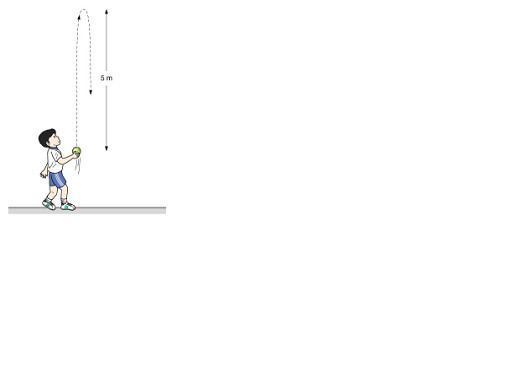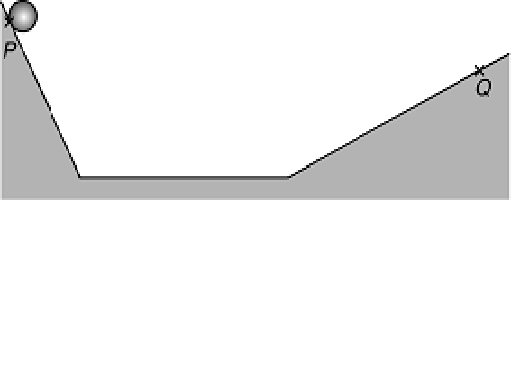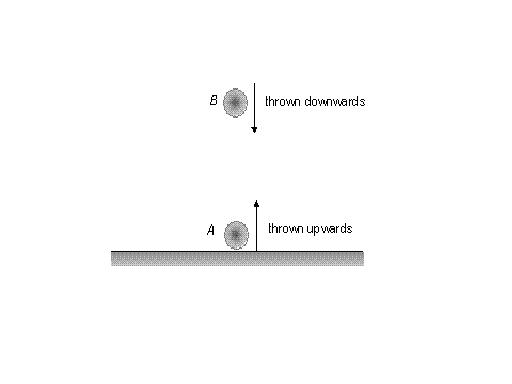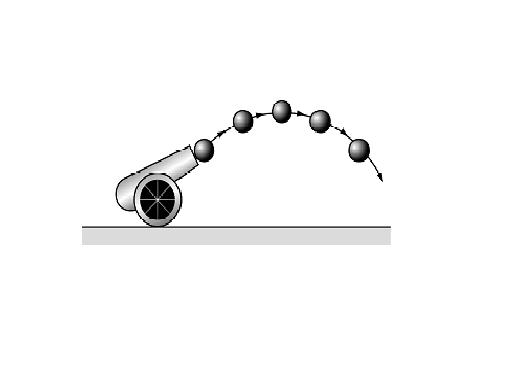Physics - Mechanics Final Test

This is an online testing. Please complete on your own.
Questions and Answers
- 1.
Using a stop-watch, Tom measured the time for a motor car to pass through 2 streetlights. The reading was 1.2 s. If the reaction time of Tom is 0.2 s, what is the maximum possible percentage error of his measurement?
- A.
8.33%
- B.
16.7%
- C.
33.3%
- D.
66.7%
Correct Answer
C. 33.3%Explanation
Tom measured the time for a motor car to pass through 2 streetlights using a stop-watch. The reading was 1.2 s. However, Tom's reaction time is 0.2 s, which means there is an inherent delay in his starting and stopping the stop-watch. This reaction time introduces an error in his measurement. The maximum possible percentage error can be calculated by dividing the reaction time by the measured time and multiplying by 100. In this case, (0.2 s / 1.2 s) * 100 = 16.7%. Therefore, the correct answer is 16.7%.Rate this question:
-
- 2.
A boy throws a ball vertically upwards as shown. What is the displacement of the ball when it returns to its starting point?
- A.
0 m
- B.
5 m
- C.
5 m upwards then 5 m downwards
- D.
10 m
Correct Answer
A. 0 mExplanation
When the ball is thrown vertically upwards, it gains potential energy as it moves against gravity. However, when it reaches its peak and starts to fall back down, it loses the same amount of potential energy and gains the same amount of kinetic energy. This means that when the ball returns to its starting point, its displacement is zero, as it has returned to the same position it started from.Rate this question:
-
- 3.
In the following figure, a ball runs on a smooth rail from P to Q. Which of the following graphs best represents the variation of the distance d travelled by the ball with time t?
- A.
Graph A
- B.
Graph B
- C.
Graph C
- D.
Graph D
Correct Answer
C. Graph C -
- 4.
Balls A and B are thrown vertically upwards and downwards respectively. If their initial speeds are the same, which of the following statements is/are correct when they meet? (1) Their displacements should be the same. (2) Their speeds should be the same. (3) Their accelerations should be the same.
- A.
(1) only
- B.
(3) only
- C.
(1) and (3) only
- D.
(1) and (3) only
Correct Answer
B. (3) onlyExplanation
When balls A and B meet, it means that they are at the same height. Since ball A is thrown vertically upwards and ball B is thrown vertically downwards, their displacements should not be the same. However, their accelerations should be the same because they are both under the influence of gravity. Therefore, the correct statement is that their accelerations should be the same.Rate this question:
-
- 5.
The following graph shows that quantity X is directly proportional to time t. Which of the following can be the quantity X? (1) Velocity of a freely falling object with negligible air resistance. (2) Displacement of an object moving at constant velocity. (3) Distance travelled by an object moving with constant acceleration.
- A.
(1) and (2) only
- B.
(1) and (3) only
- C.
(2) and (3) only
- D.
(1), (2) and (3)
Correct Answer
A. (1) and (2) onlyExplanation
The graph shows that quantity X is directly proportional to time t, which means that as time increases, quantity X also increases. This relationship is seen in both options (1) and (2). In option (1), the velocity of a freely falling object with negligible air resistance will increase as time increases. In option (2), the displacement of an object moving at constant velocity will also increase as time increases. Therefore, both options (1) and (2) can be the quantity X. Option (3), the distance travelled by an object moving with constant acceleration, does not show a direct proportionality with time, so it is not a possible quantity X.Rate this question:
-
- 6.
In the figure below, a cannon-ball has been fired from a cannonWhich of the following figures best shows the direction of the resultant force acting on the cannon-ball at different time?
- A.
Picture A
- B.
Picture B
- C.
Picture C
- D.
Picture D
Correct Answer
A. Picture AExplanation
Picture A best shows the direction of the resultant force acting on the cannon-ball at different times because it depicts the cannon-ball moving in a parabolic trajectory, indicating that it is subject to both horizontal and vertical forces. This suggests that there is a combination of both forward and upward forces acting on the cannon-ball, which would result in a parabolic path. Picture B, C, and D do not accurately represent the motion of a cannon-ball being fired from a cannon.Rate this question:
-
Quiz Review Timeline +
Our quizzes are rigorously reviewed, monitored and continuously updated by our expert board to maintain accuracy, relevance, and timeliness.
-
Current Version
-
Feb 03, 2023Quiz Edited by
ProProfs Editorial Team -
May 08, 2009Quiz Created by
Jianghui
Advanced Electromagnetism and Maxwell's Equations Quiz
Advanced Electromagnetism and Maxwell's Equations Quiz
Magnetohydrodynamics Quiz: Test Your Hydrodynamics Knowledge
Magnetohydrodynamics Quiz: Test Your Hydrodynamics Knowledge
Master Fluid Dynamics: Continuity Equation Quiz for Students
Master Fluid Dynamics: Continuity Equation Quiz for Students
Two-Dimensional Conformal Field Theory Quiz for Beginners
Two-Dimensional Conformal Field Theory Quiz for Beginners
Theoretical Physics Basics: Conformal Field Theory Quiz
Theoretical Physics Basics: Conformal Field Theory Quiz
Quantum Dynamics Test: Variational Perturbation Theory Quiz
Quantum Dynamics Test: Variational Perturbation Theory Quiz
Are You Smarter Than A 5th Grader? MCQ Quiz Questions
Are You Smarter Than A 5th Grader? MCQ Quiz Questions
STEM Entrance Exam Quiz: Can you pass this Stem Exam?
STEM Entrance Exam Quiz: Can you pass this Stem Exam?
- Aeronautics Quizzes
- Aerospace Quizzes
- Agricultural Science Quizzes
- Astrology Quizzes
- Astronomy Quizzes
- Atom Quizzes
- Biochemistry Quizzes
- Biology Quizzes
- Biomechanics Quizzes
- Biostatistics Quizzes
- Biotechnology Quizzes
- Botany Quizzes
- Branches Of Science Quizzes
- Chemistry Quizzes
- Cytology Quizzes
- Easy Science Quizzes
- Ecology Quizzes
- Electrical Quizzes
- Embryology Quizzes
- Endocrinology Quizzes
- Engineering Quizzes
- Environmental Science Quizzes
- Epidemiology Quizzes
- Experiment Quizzes
- Forestry Quizzes
- Fossil Quizzes
- Gas Quizzes
- General Science Quizzes
- Genetics Quizzes
- Histology Quizzes
- Human Biology Quizzes
- Integrated Science Quizzes
- Invention Quizzes
- Library Science Quizzes
- Lighting Quizzes
- Liquid Quizzes
- Marine Biology Quizzes
- Microbiology Quizzes
- Molecular Biology Quizzes
- Nature Quizzes
- Neuroscience Quizzes
- Nuclear Science Quizzes
- Oceanography Quizzes
- Psychology Quizzes
- Science And Technology Quizzes
- Science Glossary Quizzes
- Science Knowledge Quizzes
- Science Practice Quizzes
- Scientific Method Quizzes
- Scientific Notation Quizzes
- Soil Science Quizzes
- Solar System Quizzes
- Solid Quizzes
- Zoology Quizzes
 Back to top
Back to top







